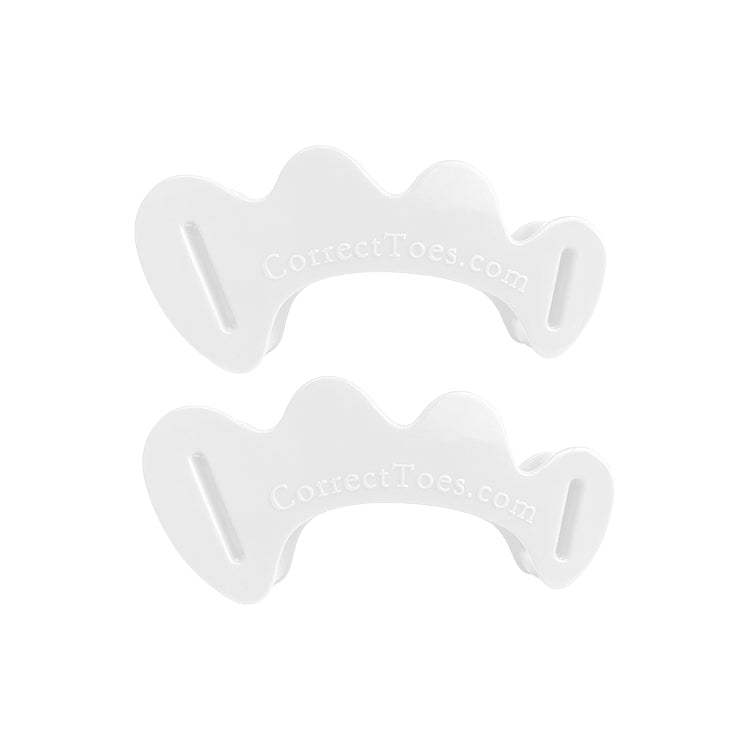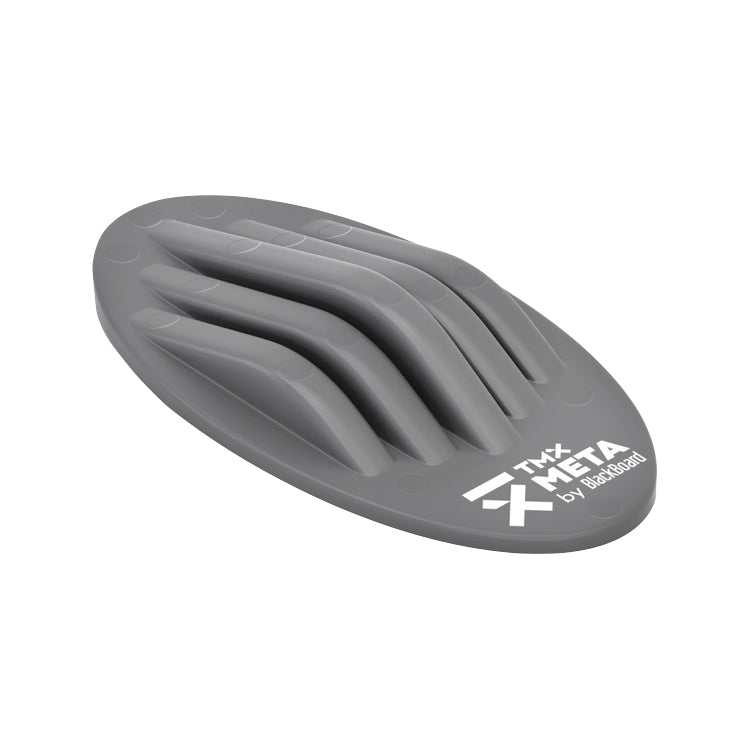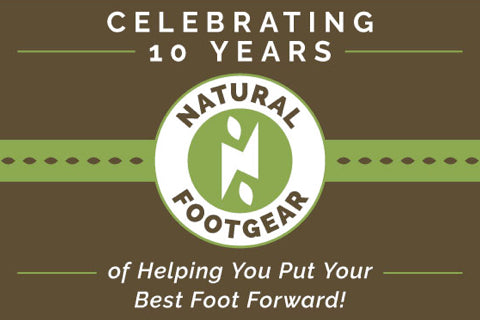
Dr. Ray McClanahan is a podiatrist (and my personal mentor) who has learned that most foot problems can be corrected by restoring natural foot function. He is also the inventor of Correct Toes—flexible, durable, and comfortable silicone toe spacers. This is the story (in his own words) of how Dr. McClanahan developed the natural approach to common foot problems that we promote through our site's products and information.
Introduction
As a sports podiatrist, I use natural approaches to address common foot, ankle, and lower extremity problems. However, the foot health approach I use in my office today differs markedly from how I practiced after I graduated from Pennsylvania College of Podiatric Medicine (now Temple University) in 1995.
My education, including my two-year podiatric surgical residency at Legacy Health Systems and Kaiser Permanente in Portland, Oregon, taught me many important things about foot health, but after many years of practicing conventional podiatry, I began to question the efficacy and effectiveness of our profession’s most common practices—pharmaceuticals, surgery, and orthotics.
Standard Practice and Recurring Problems
Many of the patients I was treating in those early years would temporarily get better, only to have their problems recur after several months to a year. It was particularly disheartening for me, as a practitioner, to see my patients experiencing the same problems over and over, as I had done everything I knew at that time to heal them, including painstakingly creating individualized orthoses and performing textbook surgical procedures. Many of the problems my patients were experiencing were problems I too had experienced as a competitive distance runner training to qualify for the Sydney Olympics and the World Duathlon Championships. It was clear to me, even then, that I needed to make a change in my practice style to better serve my patients and support their long-term foot health. Two important occurrences soon led me down a different path and changed my foot health philosophy and practice style forever.
Minimalist Running in Africa
The first occurrence was a trip to West Africa, where I saw some of the world’s fastest distance runners running barefoot or with a minimal layer of protection under their feet. I quickly came to learn that these runners didn’t experience the same injuries that I and my fellow American runners did. I began researching foot health problems in barefoot or minimally-shod populations and discovered that unshod cultures have a profoundly low incidence of common foot problems! The knowledge I gained from training with unshod runners was the foundation of my paradigm shift away from conventional podiatric practices and toward something new, exciting, and uplifting—though I didn’t recognize it as such in the moment.
Finding a New Path
It wasn’t until I read the writings of Dr. William Rossi, a podiatric luminary, that my new foot health treatment approach really began to take shape. Dr. Rossi, a true visionary in natural approaches to foot health, wrote many, many articles about the detrimental effects of conventional footwear, and his writings gave me a vehicle through which to deliver simple and effective foot care, as well as a path forward in my profession. Through Dr. Rossi’s writings, I came to understand how four key design features included in most conventional footwear—toe taper, toe spring, heel elevation, and rigid soles—were deforming feet and causing all kinds of foot problems, from bunions to heel pain to shin splints. I began addressing my own foot problems by reducing conventional shoe features and emulating barefoot biomechanics (e.g., using a flat support surface, spreading my toes, etc.). I saw great success in this approach, both in athletic performance and injury prevention. And this changed my practice focus. Now, a decade after I first discovered the writings of Dr. Rossi, I teach my patients that they are born with perfect feet, and that the best possible medicine for their foot problems is to respect nature’s brilliant foot design by wearing shoes that allow their feet to function like bare feet inside their shoes.
Toe Splay and Foot Health
To help speed foot rehabilitation and restore normal foot anatomy in my patients and the general public, I created a toe spacing device called Correct Toes. Re-establishing toe splay is perhaps the single most important action we can perform to improve short-term and long-term foot health. So I designed Correct Toes to do just this: To restore normal, healthy foot and toe anatomy, the way nature intended. Because of prolonged conventional shoe use, we’ve lost the vision of “normal” as it pertains to foot structure and anatomy. Most people in our society suffer some degree of foot or toe deformity, though many do not realize it. A trip abroad to places such as Africa, India, or Southeast Asia, where large portions of the population are shoeless or minimally shod, provides an important education into how feet are supposed to look when unaltered by constricting footwear. The toes of these people are remarkably splayed, and the ends of the toes are the widest part of the foot (not the ball, as is the case for most shoe-wearing Westerners).
Toe Splay for Performance
One of the highlights of my professional career occurred in August 2012. It was with great pride and satisfaction that I watched the 2012 London Olympics knowing that some of America’s top distance runners—including Matt Tegenkamp, Lisa Uhl, and Evan Jager—had prepared for competition using Correct Toes and the natural foot health principles that have served my patients so well over the last many years. Correct Toes toe spacers have risen in popularity over the years and are now helping thousands of Americans and other people around the world realize true, lasting foot health.
Foot Health Education
My professional goal is to provide quality, natural foot health services with an emphasis on sports medicine and preventative and conservative options as well as education on proper footwear. Through my clinic and website, I treat and educate people on a variety of foot conditions, including plantar fasciosis, bunions, hammertoes, Achilles tendinosis, shin splints, and more. My practice, Northwest Foot & Ankle, in Portland, Oregon, allows me to care for those who find their highest joy in motion, and Correct Toes has allowed me to expand my reach and positively influence the foot health of so many more people—and I am grateful for this.

WANT TO IMPROVE YOUR FOOT HEALTH?
Let the team at Natural Footgear help you! Subscribe to our newsletter for the latest offers and helpful info, and sign up for our FREE email courses on various topics and foot health conditions.
Sign Up →
Want to Improve Your Foot Health?
We are here to help you every step of the way. Get our newsletter for the latest offers and helpful info, and sign up for our FREE email courses on various topics and conditions, including bunions, hammertoes, neuromas, plantar fasciosis, shin splints, ingrown toenails, and more.
Sign Up →
 This video introduces Dr. Ray McClanahan, a leader in conservative foot care treatments, the inventor of Correct Toes, and our personal mentor. In this clip, Dr. Ray discusses his personal journey as a healthcare provider and the reasons why he adopted a more natural approach to foot care. This video also identifies the footwear features that cause or contribute to numerous toe, foot, ankle, and lower extremity problems and structural...
Read more
This video introduces Dr. Ray McClanahan, a leader in conservative foot care treatments, the inventor of Correct Toes, and our personal mentor. In this clip, Dr. Ray discusses his personal journey as a healthcare provider and the reasons why he adopted a more natural approach to foot care. This video also identifies the footwear features that cause or contribute to numerous toe, foot, ankle, and lower extremity problems and structural...
Read more












I have a bunion on my left big toe and nothing on my right foot. Apparently, my toes are very flexible. Is there something noninvasive to help correct the misalignment?
Hi, Louise. Thank you for your question. We’re sorry to hear about the bunion at the base of your left big toe. The fact that your toes have retained good flexibility is a plus when it comes to the foot and toe rehabilitation process. Indeed, flexible toes are likely to respond more quickly to natural, noninvasive attempts to restore optimal toe alignment, though even folks with less toe mobility can still often benefit greatly from this kind of approach. It’s quite common for individuals to develop a bunion on just one side, as feet are frequently of different lengths and are impacted differently by footwear and other factors.
The most common underlying cause of bunions is conventional footwear, which possesses a variety of design elements that force your foot into a bunion configuration and hold it there, rigidly in some cases, for prolonged periods while you’re weight-bearing or at rest. Thus, footwear selection is a major consideration when it comes to rehabbing your affected big toe and giving your feet the best possible environment in which to thrive. We find that flat, flexible, and wide toe box footwear (and widest at the ends of the toes) works best. Other essential footgear we’ve found to be helpful for noninvasive bunion correction includes Correct Toes, Injinji toe socks, Pedag metatarsal pads, and BlackBoard ToeBands.
Certain stretches, including the Big Toe Stretch and the Toe Extensor Stretch, can be helpful for this purpose too. Also, we have a number of resources on our site that discuss bunions in greater detail, and we encourage you to check them out and let us know if you have any questions. Of course, before you begin any protocol intended to address a particular foot health concern, we always recommend that you consult a foot care provider so that you can receive the most nuanced and personalized care and treatment plan possible. We wish you all the best on your journey back to optimal toe alignment and foot function!
Yours in Foot Health,
Drs. Marty & Robyn Hughes